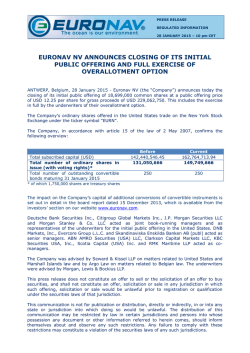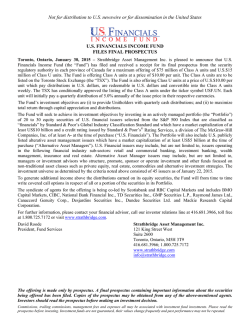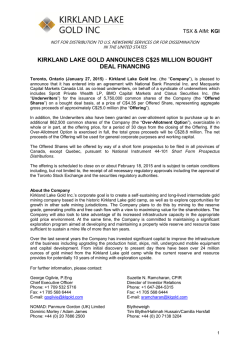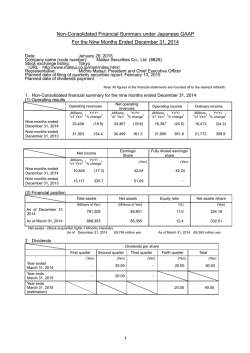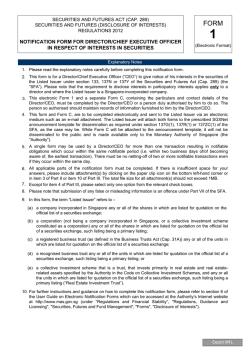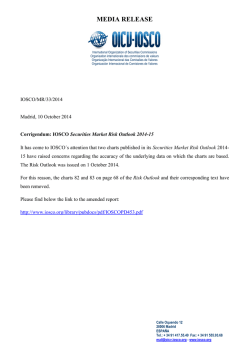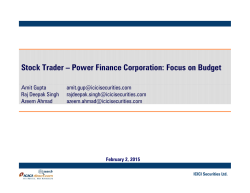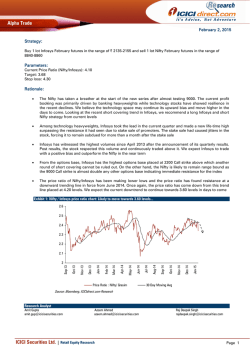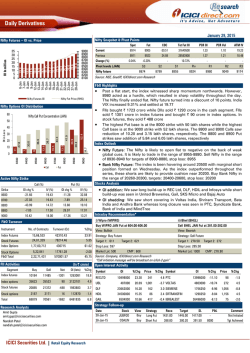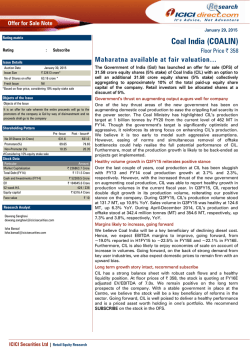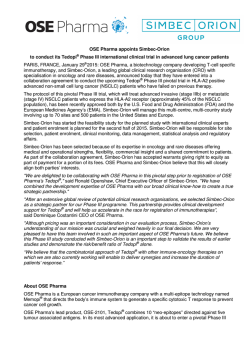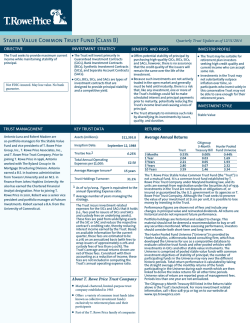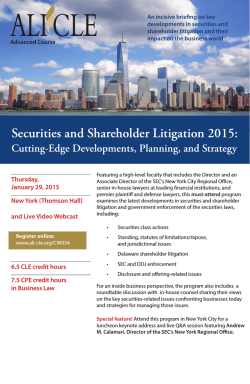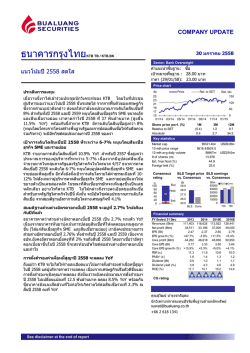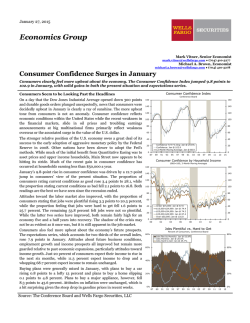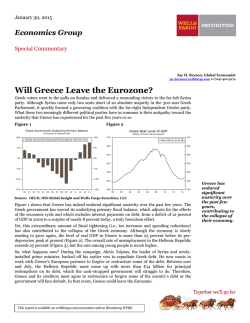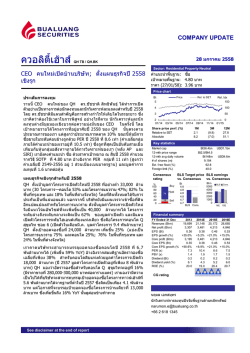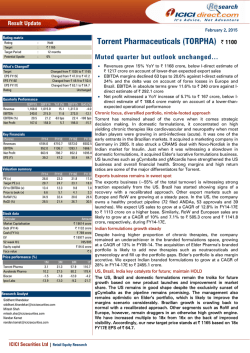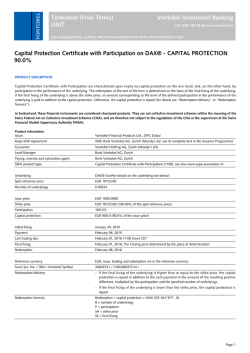
Another Modest Step to Easing SEC Registration Standards
Client Update February 2, 2015 1 Client Update Another Modest Step to Easing SEC Registration Standards NEW YORK Matthew E. Kaplan [email protected] Elizabeth Pagel Serebransky [email protected] Meir D. Katz [email protected] The Jumpstart Our Business Startups Act (the “JOBS Act”) eased the rules that require a company to register its securities when its shareholders of record exceed a specified threshold. The JOBS Act changes became effective in 2012 and in an end of the year surprise, in December 2014, the Securities and Exchange Commission (“SEC”) proposed amendments to its rules to further implement the new JOBS Act provisions. The SEC’s proposed rules clarify several open questions about how a company may practically assess the inclusion or exclusion of certain shareholders from its shareholder count (i.e., holders who acquired securities under an employee compensation plan and accredited and nonaccredited investors) for purposes of determining if registration is required. The SEC also proposed, for registration and reporting purposes, to extend the special standards applicable to bank holding companies to savings and loan holding companies. ISSUERS GENERALLY — WHEN IS REGISTRATION REQUIRED? Prior to the JOBS Act, any company with 500 or more shareholders of record and total assets exceeding $1 million at the end of its fiscal year was required to register its securities with the SEC. An aim of the JOBS Act was to allow companies to defer registration until they have a more critical mass of shareholders. To that end, the JOBS Act increased the threshold number of holders of record to either 2,000 or more persons or 500 or more non-accredited investors (if the issuer has at least $10 million in total assets), but excluded any holders who received their securities pursuant to an employee compensation plan in a transaction exempt from the registration requirements from such count. Registration may be terminated and reporting obligations suspended if the number of shareholders of record falls below 300 (or 500, in the case of an issuer that had less than $10 million in total assets on the last day of each of its three most recent fiscal years). For a foreign private issuer, registration of www.debevoise.com Client Update February 2, 2015 2 securities with the SEC is currently required if it has 300 or more shareholders of record in the United States (in addition to the general requirements). Different registration/deregistration thresholds apply to banks, bank holding companies and savings and loan holding companies. Treatment of Securities Granted under Employee Compensation Plans The JOBS Act added an exclusion from the registration threshold for holders of record who received their securities under an “employee compensation plan” in a transaction exempted from the registration requirements of Section 5 of the Securities Act, but did not define the parameters of the exclusion. To avoid what it called the “needless complexity” of a new definition and conflicts with existing rules, the SEC’s new proposed rules provide a non-exclusive safe harbor that companies may use to determine whether shareholders received securities pursuant to such a plan: companies may apply familiar Rule 701 concepts applicable to private company exempt issuances to employees, including the definition of “compensatory benefit plan.” This definition has a broad scope, and covers a wide variety of plans and arrangements, including any purchase, option, bonus and stock appreciation plan, and any compensatory contract. To satisfy the exclusion, whether or not the securities were issued pursuant under Rule 701, certain provisions of Rule 701(c) would have to be satisfied — namely that the employee compensation plan must be: (i) in written form, (ii) established by the issuer, its parent, majority-owned subsidiary or majority-owned subsidiary of its parent, and (iii) for the participation of employees, directors, officers and certain individual consultants and advisors. The SEC’s proposed rules also specify the types of “employee compensation plan” transactions that are exempt from the registration requirements of Section 5 of the Securities Act for purposes of the exclusion. Exempt transactions would include offers under Section 4(a)(2) of the Securities Act of 1933 (the “Securities Act”), Regulation D of the Securities Act or Rule 701 or Regulation S of the Securities Act that meet the conditions described above regarding employee compensation plans, as well as securities issued under the “no sale” theory (e.g., as bonus stock). In addition, holders who receive securities in exchange for such excluded securities would continue to qualify for the exclusion if they are then employed by the surviving issuer or providing services to it, because the compensatory purpose of the initial grants is not affected by the exchange. Consistent with existing SEC rules, a company may make this determination by looking at the records it maintains of owners of record, in accordance with accepted practice. www.debevoise.com Client Update February 2, 2015 3 The proposed exclusion would also apply to permitted family member transferees if the securities were acquired by gift or domestic relations order (or upon an exercise of an option transferred in such a manner), but once the securities are transferred or sold to a third party, the new holder would need to be counted for registration purposes. For this reason, it will be advisable for companies intending to rely on this exclusion to either prohibit any employees who receive securities under a plan from transferring the securities without the company’s consent or require notice to the company. The SEC’s proposed rules would permit foreign private issuers, who are otherwise subject to different registration standards than other issuers, to similarly exclude holders who received securities pursuant to an employee compensation plan when counting their U.S. holders. It should be noted that the exclusion does not apply to termination of registration or suspension of reporting. So, once a company does register under Section 12(g) of the Exchange Act, these excluded securities will be counted for purposes of determining whether the company must remain a registered and reporting company (even though those securities would not have been used to determine an initial need to register). How Are “Accredited Investors” Identified? A company must have fewer than 500 non-accredited investors (excluding holders described above who acquired their securities pursuant to an employee compensation plan) to defer registration. Under the proposed rules, the determination will rest on the company’s reasonable belief as of the last day of its most recent fiscal year. The proposed rules do not change the SEC’s standard of “accredited investor,” but use the existing standard under Rule 501(a) that applies to exempt offerings to accredited investors. The SEC did not mandate what kind of due diligence a company should undertake each year to determine whether its investors remain accredited or whether reliance on prior information or third-party representations is appropriate, and noted that the determination should be based on the particular facts and circumstances. Furthermore, while the SEC did not propose a safe harbor for determinations of accredited investor status, it indicated a willingness to consider one if there are significant benefits to companies (e.g., from avoiding additional costs of making periodic determinations about accredited investor status), assuming no serious risk for negative effects on investors. In any event, if a company’s shares are freely traded (e.g., on the over-the-counter market or in a private secondary trading platform), the company may not have sufficient information about the accredited investor status of shareholders in the secondary market, without actively seeking out this www.debevoise.com Client Update February 2, 2015 4 information. The SEC acknowledged that the rule may create a burden on companies, and requested input about how to alleviate the burden. Ultimately, these questions do not have easy answers, and the SEC may decide that companies can decide to either incur the burden or register. Note that the SEC has elsewhere indicated that it is reviewing the standard of “accredited investor” under Rule 501(a), as required by the Dodd-Frank Act, which requires a review of the “accredited investor” definition as it relates to natural persons every four years. ISSUERS THAT ARE BANKS, BANK HOLDING COMPANIES AND SAVINGS AND LOAN HOLDING COMPANIES — WHEN IS REGISTRATION REQUIRED? A separate registration standard of 1,200 holders of record applies for banks and bank holding companies under the JOBS Act (up from 300 pre-JOBS Act). The SEC has proposed, for registration and reporting purposes, to treat savings and loan holding companies the same as banks and bank holding companies for these purposes. In doing so, the SEC recognized that there is currently inconsistent treatment among depository institutions, despite them being subject to the same oversight by banking regulators. The SEC estimates that of the 125 savings and loan reporting companies as of June 30, 2014, approximately 90 would be eligible to terminate their registration as a result of these proposed rules. *** Please do not hesitate to contact us with any questions. www.debevoise.com
© Copyright 2025
